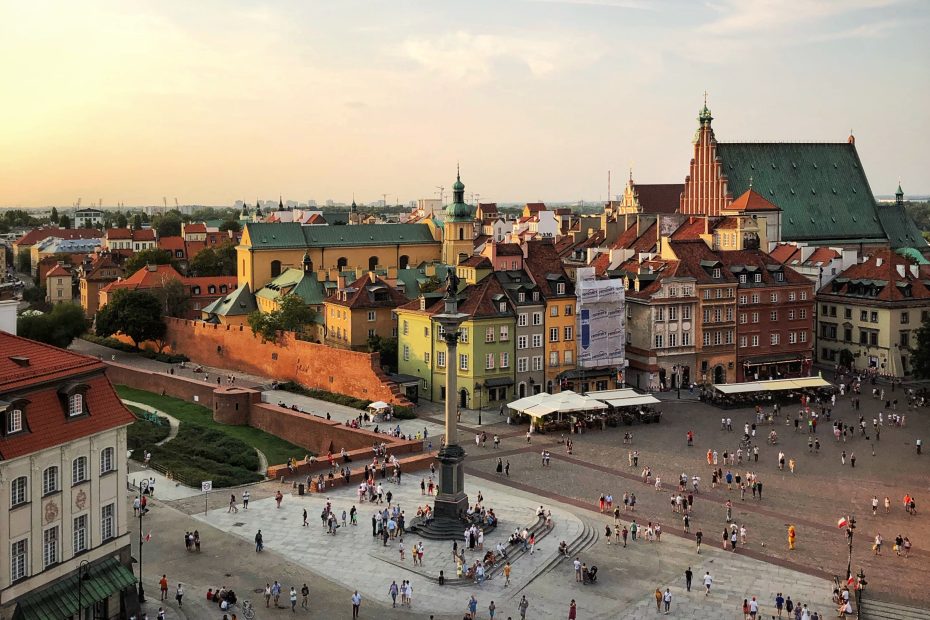Table of Contents
Introduction
Poland is a country with a tumultuous history but also one with a rich cultural heritage. From historic cities like Warsaw and Krakow to stunning mountain resorts like Zakopane, Poland has something for every traveler. Polish cuisine, art, architecture, and natural beauty combine to make this eastern European nation a delight to explore. Whether you’re a history buff, foodie, or outdoor adventurer, Poland will captivate you with its diversity.
Warsaw
Warsaw, Poland’s capital and largest city, is a must-visit. The city’s Old Town was rebuilt after being destroyed in World War II and is now a UNESCO World Heritage Site. Wander the charming narrow streets and see the iconic Royal Castle towering over Castle Square. Nearby is the grand Royal Route lined with historic churches, mansions, and monuments like the Tomb of the Unknown Soldier. An emotional stop is the fascinating Warsaw Uprising Museum honoring those lost in Warsaw’s rebellion against Nazi occupation.
When ready for fresh air, head to Lazienki Park where you can explore the serene grounds and Lazienki Palace on the lake. Afterward, dive into Warsaw’s trendy restaurant scene with creative gastropubs and hip cafés. Don’t miss trying a hearty zapiekanka, an open-faced sandwich piled with mushrooms and cheese.
Krakow
Further south, Krakow similarly mixes old with new. This former royal capital is home to the awe-inspiring Wawel Castle and Wawel Cathedral where Polish kings were crowned for centuries. The castle complex sits atop Wawel Hill with commanding views over the Vistula River. Down below in Krakow’s Main Market Square is the largest medieval town square in Europe, lined with al fresco cafés perfect for people watching.
The historic Jewish Quarter of Kazimierz is also a must with its synagogues and vibrant nightlife. A poignant but essential visit is the sombre Auschwitz-Birkenau Memorial at the site of the former Nazi concentration camp. End on a lighter note by joining a tour of the vast underground Wieliczka Salt Mine and see its salt sculptures.
Gdansk
Up north, Gdansk sits on the Baltic Sea coast with a character all its own. Walk the charming Long Lane (Ulica Długa) to see the elaborate architecture influenced by Gdansk’s ties to the Hanseatic League. Pose in front of Neptune’s Fountain before touring the striking St. Mary’s Church, which is the world’s largest brick church.
Learn about Gdansk’s dramatic 20th-century history at the new Museum of the Second World War. The city also has a long shipbuilding tradition which you can explore at the National Maritime Museum. And be sure to sample fresh seafood like salmon and cod in a harborfront restaurant.
Wroclaw
In southwest Poland, Wroclaw’s location on various rivers and canals earned it the nickname “Venice of Poland.” Cross over the many bridges connecting little islands in the Old Town. The showstopper Market Square features the elegant Gothic Town Hall. For panoramic views over the city, ascend the observation deck of the futuristic Sky Tower.
Don’t miss the fascinating Panorama of Racławice, a circular 19th-century painting depicting the 1794 Kosciuszko Uprising. Wroclaw is also home to Poland’s largest Centennial Hall, an impressive domed structure and UNESCO site.
Zakopane
Deep in the Tatra Mountains, Zakopane offers a refreshing alpine escape from Poland’s urban centers. The popular resort town has a relaxed vibe with traditional wooden architecture and cable cars soaring up forested slopes. Hike or bike through the hills, enjoy winter sports at ski areas like Nosal, or browse the local handicrafts and gingerbread.
Soak in the dramatic mountain views as you dig into comforting cuisine like smoked sheep’s cheese and oscypek, a salty smoked cheese. Zakopane is the perfect spot to appreciate Poland’s stunning natural landscapes.
Polish Cuisine
Of course, no trip to Poland is complete without diving into the cuisine. Beyond zapiekanki, pierogi dumplings are another staple. Try them stuffed with meat, cabbage, potatoes, or fruit. Bigos is a hearty Polish hunter’s stew made with sauerkraut, meat, and mushrooms. Obwarzanek are tasty bagels coated in salt, poppy seeds or sesame seeds.
And in the lead up to Lent, pick up some paczki for Fat Thursday – these decadent, jelly-filled doughnuts are a Polish delicacy. Polish meals are often heavy yet comforting, perfect after a long day of exploring.
Conclusion
From its turbulent history to its diverse landscapes, Poland rewards visitors with a rich cultural experience. Walk the historic lanes of Krakow, see Warsaw’s rebirth after WWII, and breathe fresh mountain air in Zakopane. Between world-class museums, imposing castles, religious sites, and memorials, Poland touches on many eras. Discover fantastic cuisine and style alongside progressive arts and nightlife. There is truly something for every interest in this underrated eastern European gem. Whether your first visit or fifth, Poland never fails to enchant.
Frequently Asked Questions:
What is the best time of year to visit Poland?
Late spring through early fall is ideal, when temperatures are mild. Summer sees peak crowds. Winters offer Christmas markets but very cold temps.
What language do they speak in Poland?
Polish is the official language. English is common in big cities and tourist sites but less so in rural areas. Learning a few Polish phrases helps.
Is Poland expensive to visit?
Compared to most of Western Europe, Poland is quite affordable. Hotel, food, and attraction costs are generally lower.
What are the must-see places in Poland?
Auschwitz, Warsaw, Krakow, Wieliczka Salt Mine, and Wawel Castle are some top attractions. Zakopane and Gdansk are also very popular.
What is Polish food like?
Hearty comfort foods like pierogi dumplings, bigos stew, zapiekanka, and paczki doughnuts. There’s also a lot of pork, potatoes, sauerkraut, mushrooms, and rye bread on menus.
